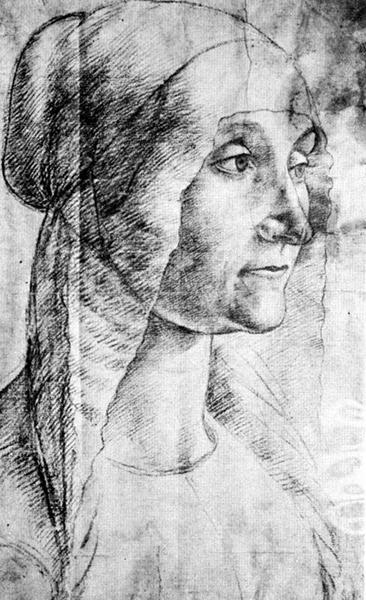slides Materials and Techniques (Mural Painting) 8-12-2003
Year 1 Introduction to History of Art. Materials and Techniques 8th December 2003
Painting 1: MURAL PAINTING
Slide 1: Venice, S. Marco, south transept; 12th century?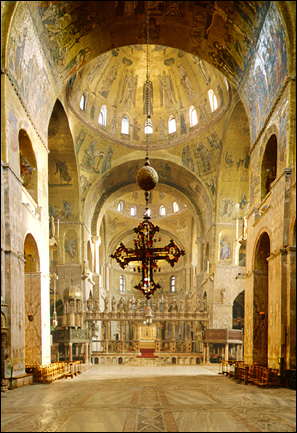
Slide 2: Greece, Daphni, Baptism; 11th century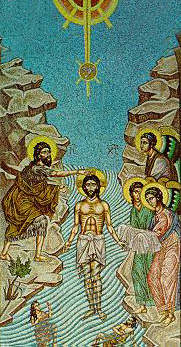
Slide 3: Pietro Cavallini, Madonna, Child & donors (Rome, S. Maria in Trastevere), c1300
Slide 4: Jacopo Torriti, Rome, S.M.Maggiore, apse c1290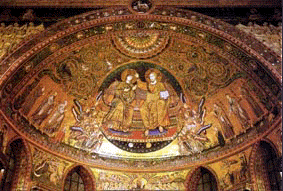
Slide 5: Raphael, Adam & Eve (Stanza della Segnatura; c1509)
Slide 6: Assisi, S. Francesco, Upper Church, M & C, c. 1295
Slide 7: Constantinople, H. Sophia, Deesis, Christ ?c1270
Detail of the Deesis Mosaic in the museum of Hagia Sophia in Istanbul, Turkey. Dating from the early 14, it depicts the figure of Christ (shown here) flanked by the Virgin Mary and John the Baptist.
Slide 8: Cavallini, Last Judgement, det., Christ c. 1295 (search Google for image)
Slide 9: Cavallini (after), St Paul in Jerusalem c. 1280 (search Google for image)
Slide 10: Cavallini Annunciation
Slide 11: Rome, S. Paolo fuori le Mura, interior in 1823
Slide 12: Cavallini (after), Apostle c. 1280 (search Google for image)
Slide 13: Cimabue, Assisi Great Crucifixion c. 1280
Slide 14: Cimabue, Assisi Great Crucifixion negative
Slide 15: Giotto, Arena Chapel Crucifixion c. 1305
Slide 16: Cimabue Great Crucifixion, negative slide (search Google for image)
Slide 17: Cimabue, Great Crucifixion, RH bottom, det. (search Google for image)
Slide 18: Assisi, St Francis Preaching to the Birds, c. 1295
Slide 19: Assisi, St Francis Preaching, with giornate, c. 1295 (search Google for image)
Slide 20: Assisi, St Francis Preaching, detail, birds (search Google for image)
Slide 21: Masaccio, Tribute Money, (Florence, S. Maria del Carmine, Brancacci Chapel), c.1427
Slide 22: Masaccio, Tribute Money, det., head of Peter
Slide 23: Masaccio, Tribute Money, det., hands (search Google for image)
Slide 24: Florence, S. Croce, Bardi Chapel, Giotto
Slide 25: Florence, S. Croce, Peruzzi Chapels Giotto
Slide 26: Peruzzi St John Evangelist cycle, + pontate c. 1330
Slide 27: Giotto, Raising of Drusiana, Peruzzi Chapel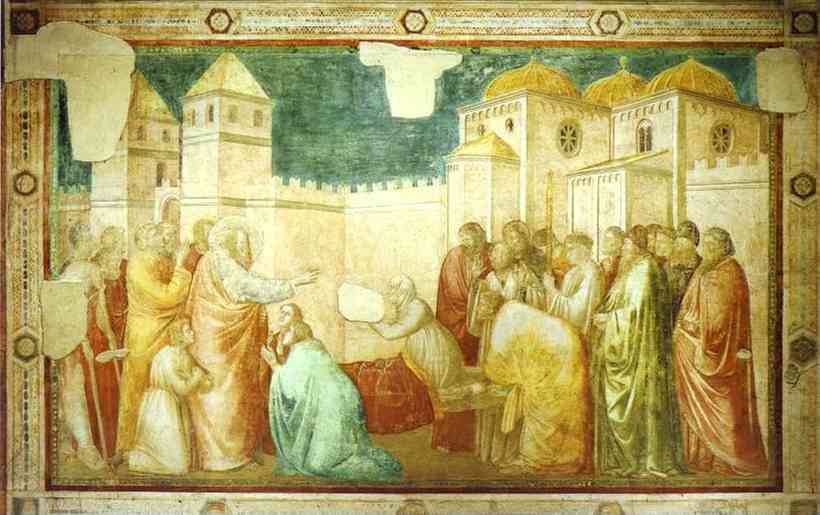
Jacobus de Voraigne’s Legenda Aurea provided the textual source for Giotto’s Raising of Drusiana.
John the Evangelist is entering the city of Ephesus in Asia Minor, when he meets the funeral procession of Drusiana, a woman who, in her lifetime had followed John ‘s own example. John is told by members of the funeral party that Drusiana had longed to set eyes on him again before her death. The Saint tells the procession to stop and commands, Drusiana arise, and go into thy house, and make ready for me some refection. Drusiana, miraculously restored to life, is seen sitting up on the bier.
We cannot know for certain why Giotto chose this particular scene out of the many episodes in the life of John the Evangelist, but certainly, the theme of death and rebirth implying life after death, was particularly appropriate for a burial chapel. Drusiana is not a saint, she is an ordinary woman and this miracle of raising her from the dead, points to the rewards that are due to the pious citizen. The emphasis on divinely assisted resurrection is surely meant to offer a promise of future resurrection to the donor of the murals and all others buried within the chapel.
The Raising of Drusiana does not appear frequently in trecento or quattrocento painting.
Slide 28: Giotto, Raising of Drusiana, det., St John E. (search Google for image)
Slide 29: Giotto, Raising of Drusiana, det., kneeling figures (search Google for image)
Slide 30: A. Baldovinetti, Nativity, Florence, SS Annunziatac. 146(1) (search Google for image)
Slide 31: Leonardo da Vinci, Last Supper c. 1497
Slide 32: Leonardo, Last Supper, det., head of Christ (search Google for image)
Slide 33: Giotto, Arena Chapel Noli me Tangere c. 1305
Slide 34: Assisi, Lower Ch., Noli me Tangere c. 1308 (search Google for image)
Slide 35: Florentine, ‘Visitation’ (drawing), c. 1350 (search Google for image)
Slide 36: T. Gaddi, Presentation of Virgin, S. Croce, c. 1330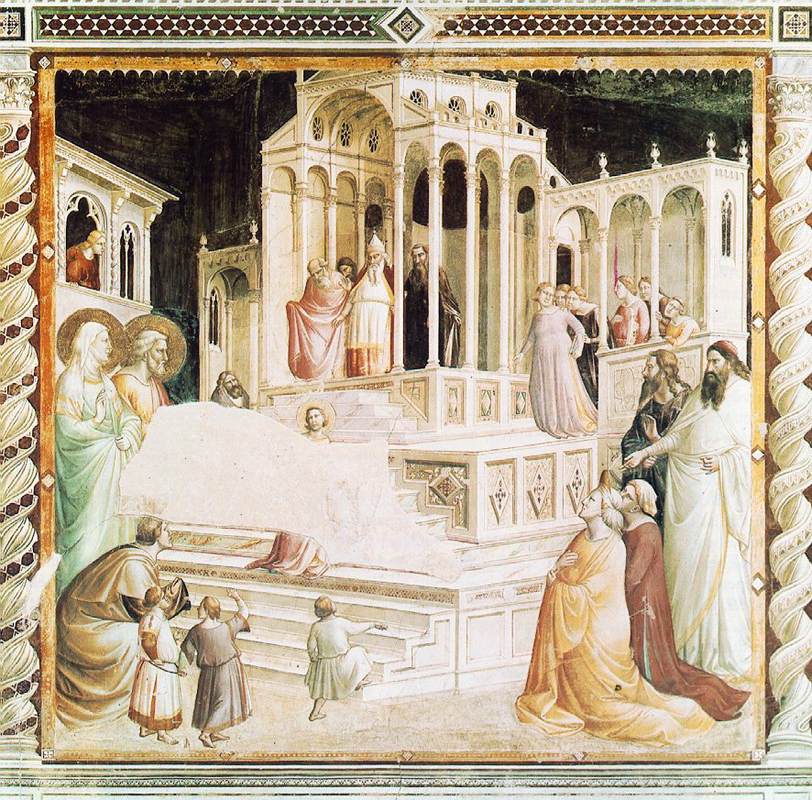
Slide 37: T. Gaddi, ‘Presentation of Virgin’ (drawing) Paris (search Google for image)
Slide 38: T. Gaddi, Transfiguration, Florence, S. Croce (search Google for image)
Slide 39: T. Gaddi, Transfiguration, sinopia (search Google for image)
Slide 40: Avignon, Notre Dame des Domes, portal
Slide 41: (after) Simone Martini, Christ Blessing, c. 1340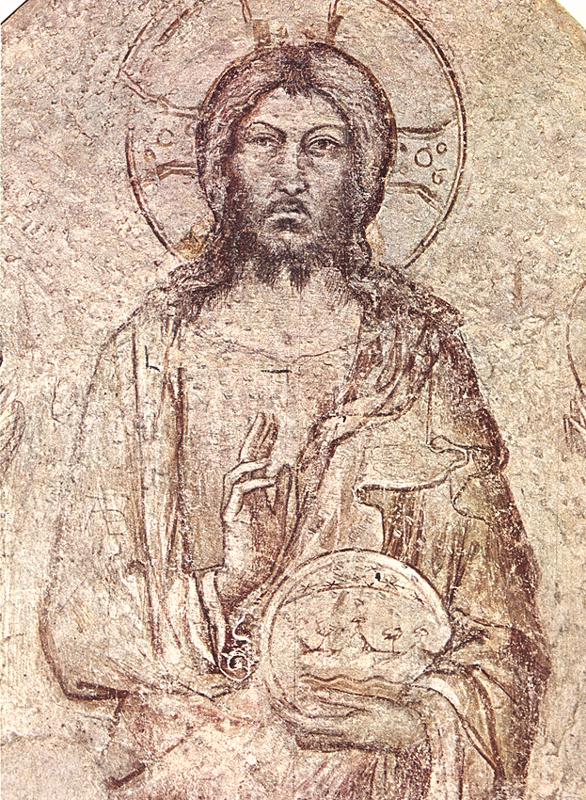
Slide 42: Simone Martini, Christ Blessing, 1st sinopia (search Google for image)
Slide 43: Simone, Christ blessing, 2nd sinopia (search Google for image)
Slide 44: Simone, Christ Blessing, det. Angels, paint layer (search Google for image)
Slide 45: Simone, Christ Blessing, det Angels, 2nd sinopia (search Google for image)
Slide 46: Andrea dal Castagno, Trinity + St Jerome c. 1455
Probably in 1453, Andrea moved to the church of Santissima Annunziata, where he painted two frescoes (St Julian and the Redeemer; The Holy Trinity, St Jerome and Two Saints) that are typical of his late style. No longer interested in the heroic and monumental characteristics illustrated in the Legnaia cycle, Andrea here imbues his figures with the crude truth that he had gradually mastered over a lifetime of hard work.
A deeply realistic mood dominates the figure of St Jerome in the fresco in the Corboli Chapel in the Santissima Annunziata. The saint is portrayed as a fully convinced Renaissance ascetic, possessing both humanity and mysticism. In this painting we are immediately struck by a few details that are so realistic they are almost too crude, like the old saint ‘s body with blood gushing out of the many wounds. Above, the Holy Trinity with a Crucifix in foreshortening; it is so well executed that Andrea deserves great praise for it, for he painted foreshortenings in a much better and more modern manner than any artist had done before him (Vasari).
Slide 47: Andrea dal Castagno, Trinity, sinopia (search Google for image)
Slide 48: Andrea dal Castagno, Trinity, det., head of St Jerome (search Google for image)
Slide 49: Domenico Veneziano, SS John + Francis, Florence, S. Croce, c. 1455
Slide 50: Dom. Veneziano, SS Jo/ui + Francis, det. head of John (search Google for image)
Slide 51: Piero della Francesca., Madonna del Parto, Monterchi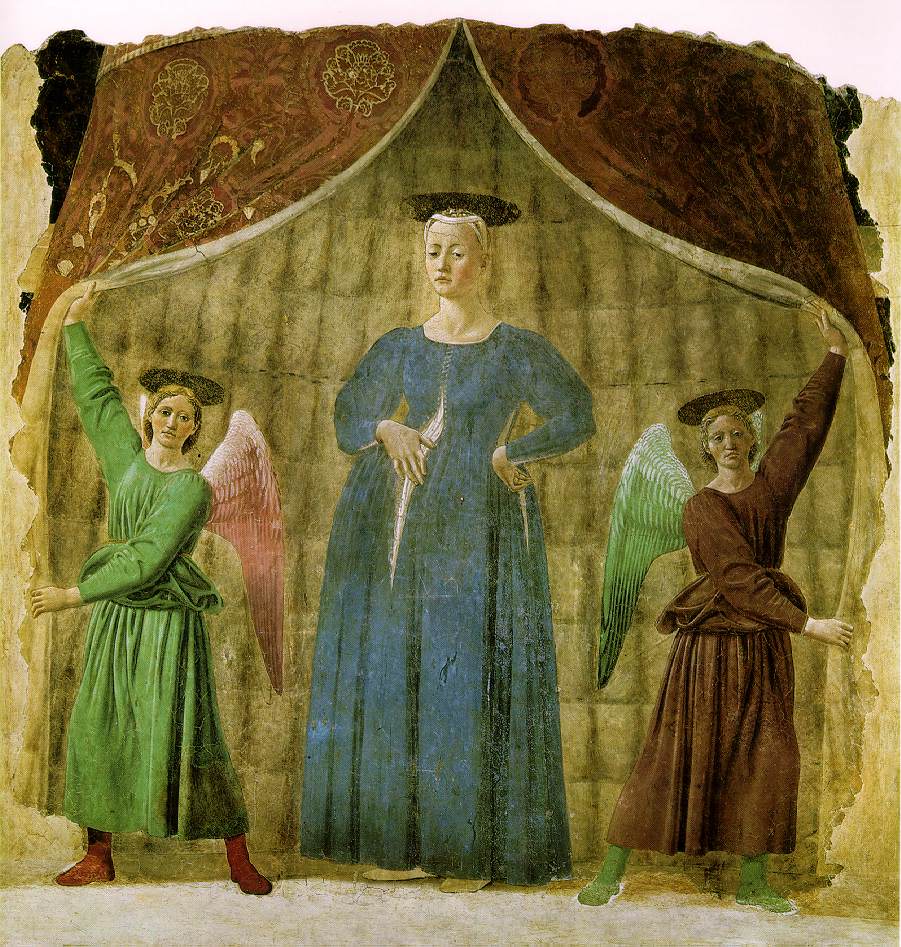
Slide 52: Ghirlandaio, Birth of Virgin Florence, S. Maria Novella, Tornabuoni Chapel, c1480
Slide 53: Ghirlandaio, Birth of the Virgin, det. Lady (search Google for image)
Slide 54: Ghirlandaio, ‘Head of a Lady’, (drawing) Chatsworth